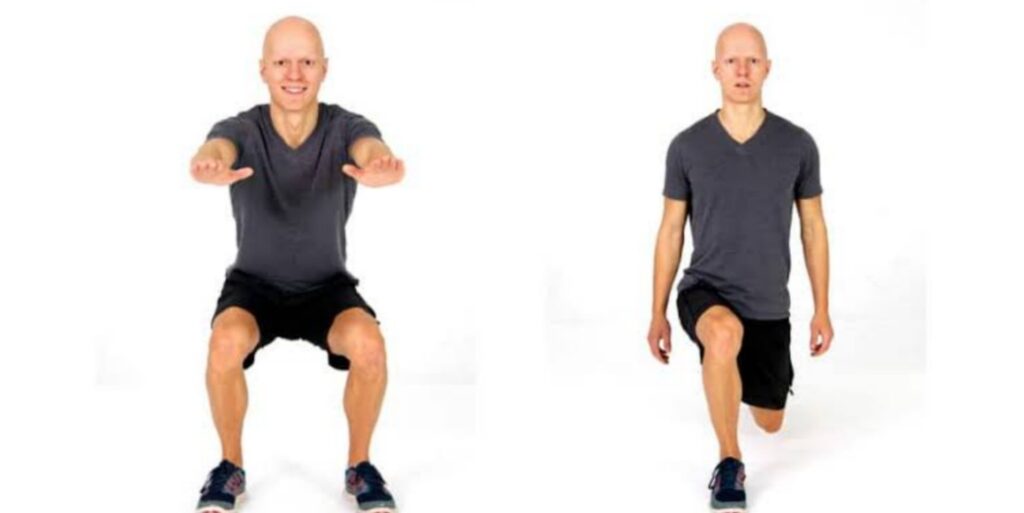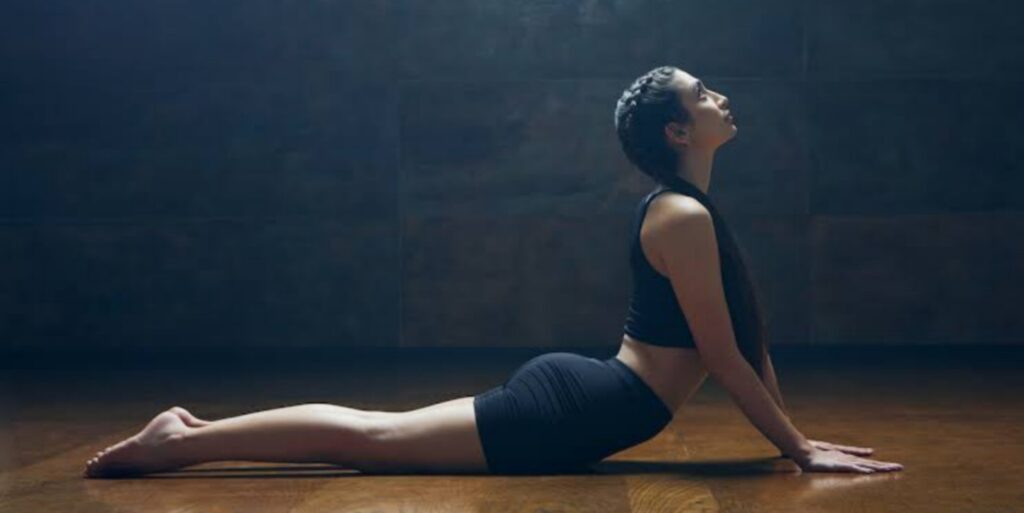Many of us begin our days by stretching before we even get out of bed, without even realising it.
Pandiculation is the term for your muscles stretching unintentionally. Most species of animals engage in this behaviour to release tension in their muscles.
Stretching is one of the few activities that feels better after a period of inactivity. Stretching lowers your chance of suffering an injury, can make you feel calmer, and may even increase circulation.
In this article, we’ll explore the benefits of stretching, discuss why it feels good, and give examples of easy stretches you can perform on a regular basis.
Why is it satisfying to stretch?
People naturally steer clear of painful situations and seek out enjoyable pursuits. The same applies to stretching. Stretching makes you feel good, which encourages you to keep your muscles at their ideal tension thanks to your body’s built-in reward system.
Here’s a closer look at why stretching is beneficial.
- Better circulation: Your body responds to stretching a muscle by increasing blood flow there. Your heart begins pumping more blood as the blood vessels surrounding the targeted muscle widen to allow more blood to pass through. The muscle or muscles you’re stretching can receive more oxygen and can get rid of metabolic waste products thanks to the increase in blood flow.
- Active parasympathetic response:Static stretching activates your parasympathetic nervous system while deactivating your sympathetic nervous system, according to research. Your digestive and resting processes are controlled by your parasympathetic nervous system. Additionally, it may contribute to feelings of relaxation and serenity.
- Release of endorphins: Your pituitary gland and central nervous system produce endorphins, which are chemicals that act as neurotransmitters. When they bind with brain receptors, they have more potent painkilling effects than morphine and produce a euphoric feeling. Endorphins are a byproduct of physical activity, sex, eating, and drinking and are part of the body’s natural reward system.
- The effects of stretching on endorphin release are not well studied. However, a 2015 viewpoint suggests that stretching may help lessen menstrual pain. The relaxation of blood vessels, the release of beta-endorphins, and the suppression of prostaglandins are thought to be the causes of its pain-relieving effects.
You may like this Article
- Top 10 Fitness Challenge Ideas To Boost Your Health And Motivation
- Don’t Hit The Gym Without This: The Ultimate Pre-Workout Meal Plan”
What advantages does stretching offer?
Regular muscle stretching has a lot of advantages. Let’s examine these advantages in greater detail.
Greater adaptability
Stretching frequently could increase your flexibility, particularly if you lead a sedentary lifestyle. As you age, your flexibility naturally declines, but stretching might help delay this development.
Better circulation
By relaxing your blood vessels and increasing the amount of blood your heart pumps, stretching improves circulation temporarily.
Stretching is believed to have long-term advantages for your circulatory health, including improved blood vessel function and lowered blood pressure, despite the fact that this field of study is still in its infancy.
Stress reduction
Your parasympathetic nervous system is activated by static stretching. Your nervous system can be activated to help reduce the psychological effects of stress. In turn, this might contribute to feelings of relaxation and calmness
Improved athletic performance
Your ability to move freely through all of your joints may improve your athletic performance. For instance, a sprinter must be able to fully extend and rotate their hips in order to reach maximum speed.
Stretching exercises that are both static and dynamic may be able to help you increase your range of motion. However, since it can reduce force production, static stretchingTrusted Source should only be done after exercises.
Better posture
By putting stress on your back, neck, and core muscles, muscle tightness and tension can have a negative impact on your posture.
Regular stretching and core-strengthening exercises have been shown in research to help improve bad posture and alignment.
Daily simple stretches
The fact that stretching doesn’t require any special equipment is one of its many benefits. You can stretch at any time and anywhere.
Here are five essential stretches that can help many of your body’s major muscle groups feel less tight and tense.
Squat lunge

- With your left leg extended and your back knee on the ground, lunge forward with your right foot. Keep your right knee just above, but not over, your right foot.
- Place your hands next to your foot on the ground. They can also be lowered to the ground or raised to the sky.
- Focus on expanding your spine and widening your chest as you take a deep breath.
- Repeat the lunge on the opposite side after holding it for at least five breaths.
Ahead bend
- Place your left leg in front of your body while sitting comfortably. Place the inside of your left thigh with your right foot.
- Lift your hands above your head after taking a long breath.
- Exhale and bend forward from your hips, reaching as far forward as you can comfortably.
- Hold the position for 40 to 60 seconds while placing your hands on the floor or on your left leg.
- On the opposite side, repeat.
Seated torso stretch
Start by placing your feet firmly on the ground while sitting upright in a chair.
- Start by placing your feet firmly on the ground while sitting upright in a chair.
- One hand should be used to hold the chair’s back while the other hand should be used to turn.
- Repeat on the opposite side while maintaining the twist for up to 30 seconds.
Cobra Pose

- Lie on your stomach with your arms close to your chest, hands under your shoulders, and fingers pointing forward.
- Lift your upper torso off the ground by pushing through your hands and straightening your arms. If you want to deepen the stretch, tilt your head back.
- For 30 to 60 seconds, maintain the position with a slight bend in your elbows.
Neck twists
- Sit up straight, with your shoulders over your ears, and with ease.
- You should feel a stretch in the left side of your neck as you roll your head forward, then to the right. For ten seconds, maintain this posture.
- Repeat on the other side, then go back to your starting position.
- Three times in each direction, repeat
Guidelines for safely stretching
- Avoid cold stretching. To prevent injury, it’s a good idea to get your blood flowing before stretching. Your muscles can be warmed up by engaging in a low-intensity activity for 5 minutes, such as walking or light jogging.
- Gently extend. Never force yourself into a painful position. A painful stretch indicates that you are stretching too far.
- Establish a stretching regimen. If stretching becomes a regular habit, you’ll benefit most from it. Stretching is advised by fitness professionals at least two to three times per week.
- Extend on both sides. In order to prevent imbalances in flexibility, make sure to stretch your body equally on both sides.
- Do not bounce. Your muscles or tendons could become injured if you bounce while stretching. Your muscles may also tighten as a result.
Frequently Asked Questions about Stretching
-
Q: Why does it feel so good when you stretch?
A: After perform increase blood flow to the muscles and joints, which can release tension and reduce stiffness. It can also activate the body’s natural painkillers, such as endorphins, which can make you feel good.
-
Why does stretching feel good after sleep?
A: After a night’s sleep, your muscles and joints may feel stiff and tight. Stretching in the morning can help loosen up these areas and increase blood flow, which can help you feel more awake and alert.
-
Q: What chemical is released when stretching?
A: Stretching can release endorphins, which are natural painkillers produced by the body. These chemicals can help reduce feelings of pain and promote a sense of well-being.
-
Q: What happens when you stretch everyday?
A: Regular can help improve flexibility, reduce muscle and joint stiffness, and improve overall range of motion. It can also help reduce the risk of injury during physical activity.
-
Q: What are the disadvantages of stretching?
A: Overstretching can lead to injury or muscle strain. It is important to stretch properly and gradually increase the intensity and duration to avoid these risks.
-
Q: Does stretching burn fat?
A: alone does not burn a significant amount of calories or fat. However, incorporating stretching into a regular exercise routine can help improve overall fitness and aid in weight loss.
-
Q: How long should you hold a stretch?
A: It is generally recommended to hold a stretch for 10-30 seconds. However, the exact duration of a stretch may vary depending on the specific muscles being stretched and individual fitness level.
-
Q: Is stretching better than massage?
A: Both are can be beneficial for reducing muscle tension and promoting relaxation. The best approach may depend on individual needs and preferences.
-
Q: Is it OK to stretch once a day?
A: Yes, once a day can be beneficial for improving flexibility and reducing muscle tension. However, it is important to listen to your body and avoid overstretching or pushing past your limits.
-
Q: What time of day is best to stretch?
A: The best time to stretch may vary depending on individual preferences and daily schedule. Some people may find it beneficial to stretch in the morning to prepare for the day ahead, while others may prefer to stretch in the evening to unwind and relax before bed.
The conclusion
Because stretching engages your parasympathetic nervous system and boosts blood flow to your muscles, it usually makes you feel good. Stretching is thought to release endorphins, which can improve mood and help with pain management.
Stretching has many benefits, including making you feel good, easing tense muscles, reducing stress, boosting athletic performance, and enhancing posture.
If you have any questions about stretching, especially if you have an injury or a long-term medical condition, consult your doctor.
